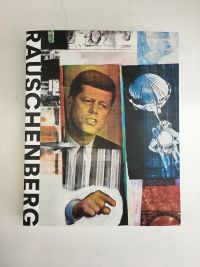If Rauschenberg could do it
By Orla Ahern
09 February 2017

In 1966, an artist famous for his Combines- exuberant collages of newsprint and cardboard stuffed animals- changed his narrative.
Robert Rauschenberg, with artist Robert Whitman and engineers Billy Klüver and Fred Waldhauer, set up a non-profit foundation, E.A.T. (Experiments in Art and Technology). Hoping to promote interaction between artists and engineers, they wanted to encourage interdisciplinary technology-based art projects. By 1968 E.A.T. had approximately 2000 artists and an additional 2000 engineers and scientists signed on as members to help with their projects.
A matching system was developed, through which any artist who contacted E.A.T. with a technical question or challenge would be matched with an engineer who could work with them on the project. Rauschenberg and Klüver saw the organisation acting as a catalyst to stimulate the involvement of industry and technology with the arts. Attending the recent Rauschenberg exhibition at Tate Modern, I realised that what he was trying to achieve in the 1960s, echoes with what Max Fordham do today.
From my view in the Communications Team, I constantly observe the cross-pollination and collaboration within Max Fordham, an approach that serves as a foundation of the Practice.
Max established his own environmental engineering practice in 1966, the same year that E.A.T. started. Max believed that electrical and mechanical engineering were inter-related, not discrete, disciplines. He understood that building services that developed together could shape the art of engineering, and the design of buildings, in the future.
Since its inception, the Practice has been allowed to develop as both an active and a responsive environment, where creativity and experimentation has been encouraged. Max's vision has had a significant impact on the relationship between engineering and design.
In analysing Rauschenberg’s work and reviewing Max’s own, I've come to understand that neither of these two strikingly different people, working in their own professional capacity, could have totally envisioned the impact of what they started. Their active engagement with experimental ideas and new approaches created exceptional conditions and outcomes within their industries. They have let us in on previously unimagined worlds, with new strategies and ploys, new sensations and solutions. And I am grateful for that.





.jpg)
Comments
Add a comment